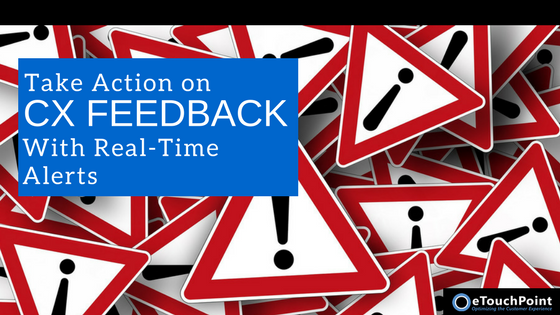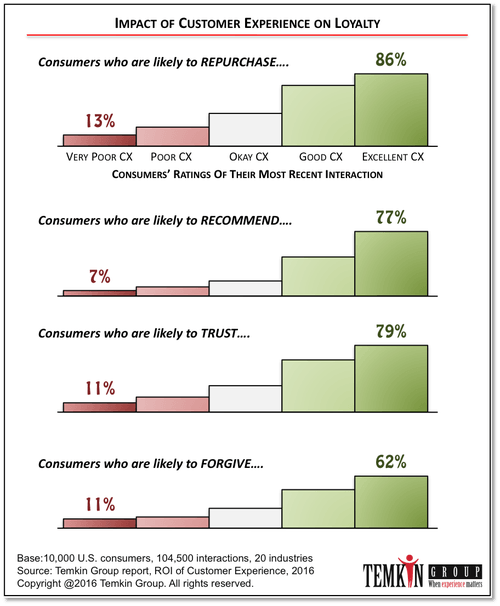
“More than one-third of businesses will restructure
to shift to customer-obsessed operations.”
~Forrester 2017
As businesses evolve to focus on a customer-centric model, every company must adapt based on customer feedback. Some companies have made initial strides in implementing voice of the customer (VoC) programs. Often, however, they are simply collecting customer feedback instead of monitoring it carefully.
In a recent study, The State of Monitoring 2017, only 50% of the responding businesses said their company has a defined monitoring strategy for the feedback they collect. Of the 50% who do have a monitoring strategy, only 13% feel ‘very satisfied’ with the approach their company has in practice.
Succeeding in today’s business landscape demands that you do more than just collect unstructured feedback. Instead, you need to truly listen to concerns; respond quickly to address issues; offer solutions; and ideally, provide a positive touchpoint. Achieving these goals helps your company avoid churn and improve loyalty.
With an overwhelming amount of feedback, where is a good area to focus your efforts initially?
Real-time alerts.
Real-time alerting is a monitoring solution where customer feedback, meeting specific criteria, qualifies as an “alert.” When this occurs, the appropriate team receives an alert to ensure escalation of negative customer feedback, drives quick resolution, and (hopefully) fortifies the customer relationship.
Read on for expert advice on how to maximize the impact of your VoC and real-time alerting initiatives.
Achieving Speed and Personalization in Customer Follow-Ups
CX-savvy brands know that each interaction is an opportunity to win or lose customer loyalty. As evidence, CX think tank the Temkin Group has measured how customers’ most recent interaction influences four factors driving customer loyalty—customers’ likelihood to repurchase, recommend, trust, and forgive a brand. It’s no surprise that a positive experience has a clear link to loyalty.

Image Source: Temkin Group
Even if the customer has a negative initial experience, real-time alerts can help you turn the experience into a positive one. How? If you can achieve a quick response and effective resolution you can restore the customer’s trust.
Speed of personalized response and acceptable resolution are critical factors for real-time alerting to be successful and have the greatest positive impact on the customer’s perceptions of your company.
CX leaders define specific response times for following-up with customers who have had a subpar experience. Often, aiming for a first outreach in less than 24 hours is a solid goal. These innovators also strive to personalize the response to the customer by having managers contact to listen to and assess concerns.
Meeting response time goals can be challenging at first. Even if you aren’t meeting your response time target, if you are providing valuable and personal responses to your customers you are moving in the right direction. By actively focusing on response time and closing the loop with your customers, you are managing an impressive process.
Loyal customers are 5x as likely to repurchase, 5x as likely to forgive, 4x as likely to refer, and 7x as likely to try a new offering.
~ Temkin Group
The education and investment in your team to resolve real-time alerts is mission-critical for establishing your company as a leader focused on CX and maintaining (and expanding) a loyal customer base.
Here are two insights from CX thought leaders that underscore the importance of proactive efforts to listen to and retain customers:
- The top companies recognized for listening to their customers (VoC), enjoy a 55% greater customer retention rates. (Hinshaw, March 2017)
- It’s 5X more expensive to recruit a customer than retain one. (Stockwell, Jan 2017)
Converting Feedback into Strategy and Action
In some cases, real-time alerts involve feedback that is situation-specific to a single customer. However, more often a closer look reveals patterns in customer complaints that signals an issue needing attention. And it is important to remember that the person who takes time to provide you feedback likely is not alone in his/her thinking.
“Only 1 out of 26 unhappy customers complain. The rest churn. A lesson here is that companies should not view absence of feedback as a sign of satisfaction. The true enemy is indifference.”
Esteban Kolsky, CEO of ThinkJar and former Gartner analyst
By performing regular monitoring and analysis of all your VoC feedback and real-time alerts, you will likely identify sentiments indicating trends, strengths, and weaknesses in your business. If your business model is such that you can quickly adapt, that can make a positive impression on your customers. Customers will appreciate being heard and impressed with your company’s quick actions.
Image Source: Clear Action
Winning in a Customer-Focused Marketplace
Today’s companies fight for survival in a market where customer experience has become the primary differentiator. The companies that take the lead will do more than maintain the status quo. Instead, they will adopt novel CX tools and approaches that provide them deeper and more meaningful customer insights.
“By 2020, customer experience will overtake product and price as the key brand differentiator.”
~Walker Information
VoC has emerged as one of the top focus areas for companies that desire to deliver stand out customer experiences. Still, companies are struggling to make sense of the high-volume of unstructured feedback their VoC program produces. This puts them in jeopardy of a “collect it and forget it” approach that leaves valuable customer insights unheard.
Real-time alerts can be a key solution to unearth insights hidden in volumes of VoC feedback. With real-time alerts, companies can use these untapped insights to respond to immediate issues and deepen their understanding of customer wants and needs. This empowers businesses to engage with individual customers to resolve concerns and to shape future CX efforts around issues that are most meaningful to customers.
Author: Connie Harrington
Connie is a content strategist and serves as managing editor of the eTouchPoint blog. Possessing 15+ years of international experience across five continents, her focus areas include: customer experience management, customer contact management, communications planning, content marketing, email marketing, and employee engagement. Previously, she held marketing and communications leadership positions at CGI, Mindwrap, and TEOCO. She earned a B.A., cum laude, from the College of William and Mary in Virginia.

